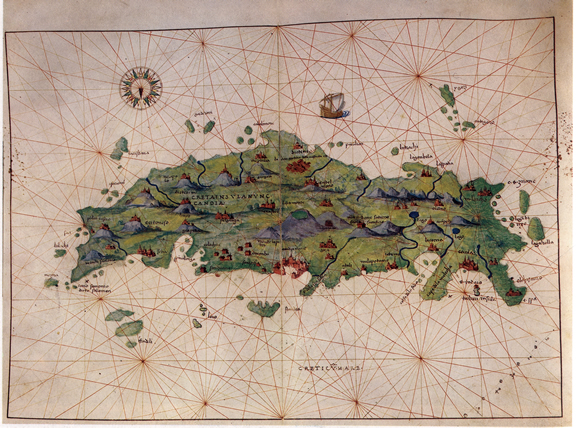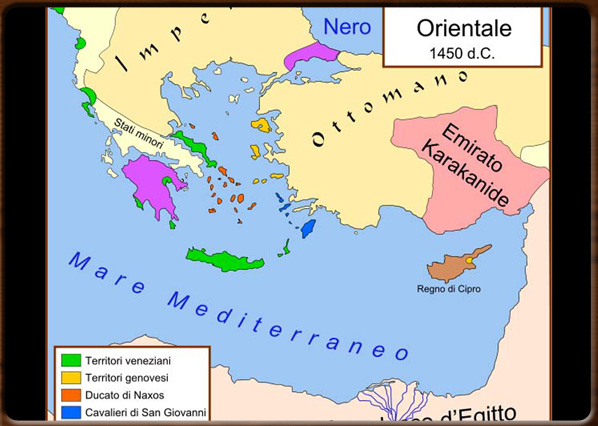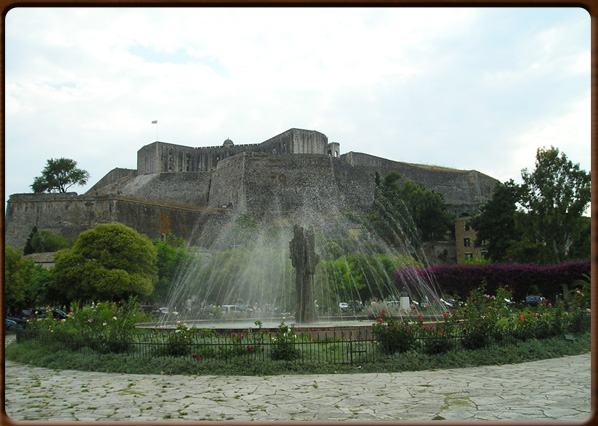
The Island of Corfu.

Island of Crete.

East Mediterranean in 1450.

Caterina Cornaro, F. Hayez, 1841.

Corfù, the fortress.





No video
During the Fourth Crusade (1202-1204) Venice gained possession of all the most important islands and sea-trading cities in the former Byzantine Empire, which had by then become known as the Empire of the Orient.
Thanks to its conquest of a network of ports, plus the islands of Corfu (1207) and Crete (1209), Venice was guaranteed substantial trade with the Levant.
Having already acquired the island of Eubea in 1204, Venice gradually became the centre of a vast maritime empire that, in its heyday in the 1300s, included not only the coast of Dalmatia and the major Greek islands mentioned above, but also the southern part of the Peloponnesus peninsula, most of the Cyclades islands and the major island of Cyprus.
By the end of the 14th Century, the Venetian fleet could count on something like 17,000 sailors and more than 3,000 ships of various types, thus giving the lagoon city the almost complete control of trade in the East Mediterranean.
The island of Corfu, the most Venetian of the Greek isles, was snatched from the Republic after only a few years of Venetian domain by the Swabians and then the Angioini of Naples. However, the latter sold it back to Venice in 1402 for 30,000 gold ducats. Also the island of Cephalonia in the Ionian Sea and the island of Rhodes south of Turkey were closely linked to the fortunes of Venice.
All the Greek isles, small and large alike, were crucial to Venice if it wanted to maintain its commercial power in the East Mediterranean, as they acted as safe harbours and supply points for the Venetian convoys, navy and merchant ships.
Even the island of Cyprus was a strategic point for Venetian power and trade.
This island (officially annexed to Venice in 1489 as a gift of Caterina Cornaro, the Queen of Cyprus) was ruled by the Venetians for some eighty years until it was invaded by the Turks in 1570. Cyprus provided cotton, salt and sugar: the cotton gave name to a muda introduced in 1344, the final destination being this island, while the sugar was harvested in the large plantations owned by the dei Corner family from Venice and then shipped to Venice where it was refined.
The military and commercial splendour of the Serenissima started to decline at the end of the 1600s and early 1700s.
First Crete was ceded to the Turks in 1669, then the Peloponnesus lands were surrendered together with the rich markets of Methoni, Corone and Pylos, plus all Venice’s possessions in the Aegean.
1718 marked the end of Venice’s maritime empire with the signing of the Treaty of Passarowitz between Austria and the Ottoman Empire.
The so-called "Stato da Mar" was by then reduced to just the Dalmatian coastline.
1100 - 1200 - - rev. 0.1.7